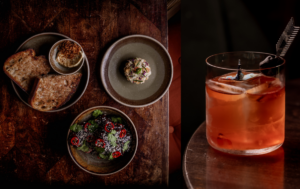What makes a whisky worth the pour

Pouring a glass of whisky is not just about the drink – it is about the story, the craftsmanship, and the moment. Whether marking the end of a long day or celebrating a special occasion, the right bottle can make a significant difference. However, with so many options available, identifying which ones are truly worth the pour can be challenging.
The decision is not always driven by price or brand reputation. For many enthusiasts worldwide, Islay Scotch whisky offers a bold, peaty experience that either captivates or divides. This reflects the broader nature of whisky – it is a deeply personal experience.
First sip impressions: Taste and aroma matter
Starting with the basics, a good whisky should not overwhelm the senses. Instead, it should offer an inviting experience. The aroma – often referred to as the “nose” – provides the first indication. Sharp or smooth notes may be detected, along with hints of vanilla, smoke, fruit, or spice.
Taste follows. A quality whisky typically presents a complexity of flavours that evolve with each sip. It should not feel overly alcoholic or one-dimensional. If a whisky tastes harsh or causes a burning sensation, it may not be the best choice.
Whiskies from Islay, for example, are often characterised by earthy, smoky, and coastal flavours that reflect the environment where they are crafted. For some, these characteristics are instantly appealing; for others, they require time to appreciate. The key lies in exploration and attentive tasting.
Why we choose one whisky over another
Increasingly, whisky is being chosen not solely based on brand, but on story and experience. A bottle that evokes memories of a trip to Scotland or one shared among friends can become a staple in a collection.
Studies indicate that consumers are gravitating toward small-batch and craft expressions, seeking unique flavour profiles and greater transparency in production. The experience extends beyond drinking; it involves a connection to craftsmanship.
This emotional connection is often why individuals are willing to invest more in a whisky that resonates with them. Whether it is the heritage of a distillery or the rugged, windswept character of an Islay Scotch, emotion plays a significant role in the selection process.
The feel: Texture and finish
Texture might seem like an unusual characteristic to consider in a drink, but it can significantly influence the overall experience. A high-quality whisky often exhibits a silky or creamy mouthfeel that lingers pleasantly. This is also where the finish becomes important – the way flavour persists after swallowing.
A long, smooth finish with lingering notes of oak, caramel, or spice often signals a well-aged or well-crafted whisky. In contrast, a whisky that fades quickly or leaves a harsh aftertaste may lack maturity or balance.
Aging gracefully: Does older always mean better?
Age statements can provide useful information, but they are not the only measure of quality. A 12-year-old whisky may taste superior to an 18-year-old, depending on how it has been aged and the types of barrels used. What matters more is how the aging process has shaped the flavour.
There is also growing recognition that newer, younger whiskies – particularly those from craft distilleries – can demonstrate exceptional quality. The focus is shifting away from simply pursuing the highest age statement toward understanding how aging interacts with the ingredients and the distillation process.
Packaging and presentation: Does it influence perception?
Let’s be honest: attractive packaging can be tempting, and there is nothing inherently wrong with that. Presentation often sets expectations and contributes to the overall experience. However, while a well-designed bottle can encourage a purchase, it should not be the sole factor in the decision-making process.
A whisky bottle that feels substantial, features thoughtful design, or includes detailed tasting notes often reflects a level of care that may be mirrored in the contents. Nevertheless, it remains important to assess the whisky through personal tasting to ensure it aligns with individual preferences.
A matter of setting: Environment enhances experience
The environment and circumstances in which whisky is enjoyed can significantly influence perception. Drinking a smoky Islay Scotch by the fire after a rainy hike, for example, can create a lasting memory. Sharing a fruity bourbon with friends at a rooftop bar can be equally memorable.
Context enhances the tasting experience, which is why certain whiskies seem perfectly suited to particular moments. The same bottle may be perceived differently depending on mood, weather, or even the choice of glassware. Ambiance plays a powerful role and should not be underestimated.
Tips for finding the perfect pour
For those still exploring whisky preferences, a few strategies can help:
- Start a tasting journal: Record observations about what is enjoyed or disliked in each whisky sampled. Over time, patterns may begin to emerge.
- Try before buying: Many bars or liquor stores offer samples or mini bottles, allowing for taste-testing without a full commitment.
- Talk to others: Joining a tasting group or consulting online reviews can provide valuable guidance in discovering new favourites.
- Be open-minded: An initial experience with one Islay Scotch may not be favourable, but another expression might offer a pleasant surprise.
What it all boils down to
Ultimately, what makes a whisky worth selecting comes down to individual palate, preferences, and experiences. Whether drawn to the robust peat of a Scotch or the sweet warmth of a bourbon, the “best” whisky is simply the one that offers genuine enjoyment.
Taking time to explore different varieties and styles is key. Personal discovery should guide choices, rather than external opinions about what should taste good. When the right pour is found, it becomes unmistakable.
That is what makes whisky worth appreciating.
The editorial unit


























Facebook
Twitter
Instagram
YouTube
RSS